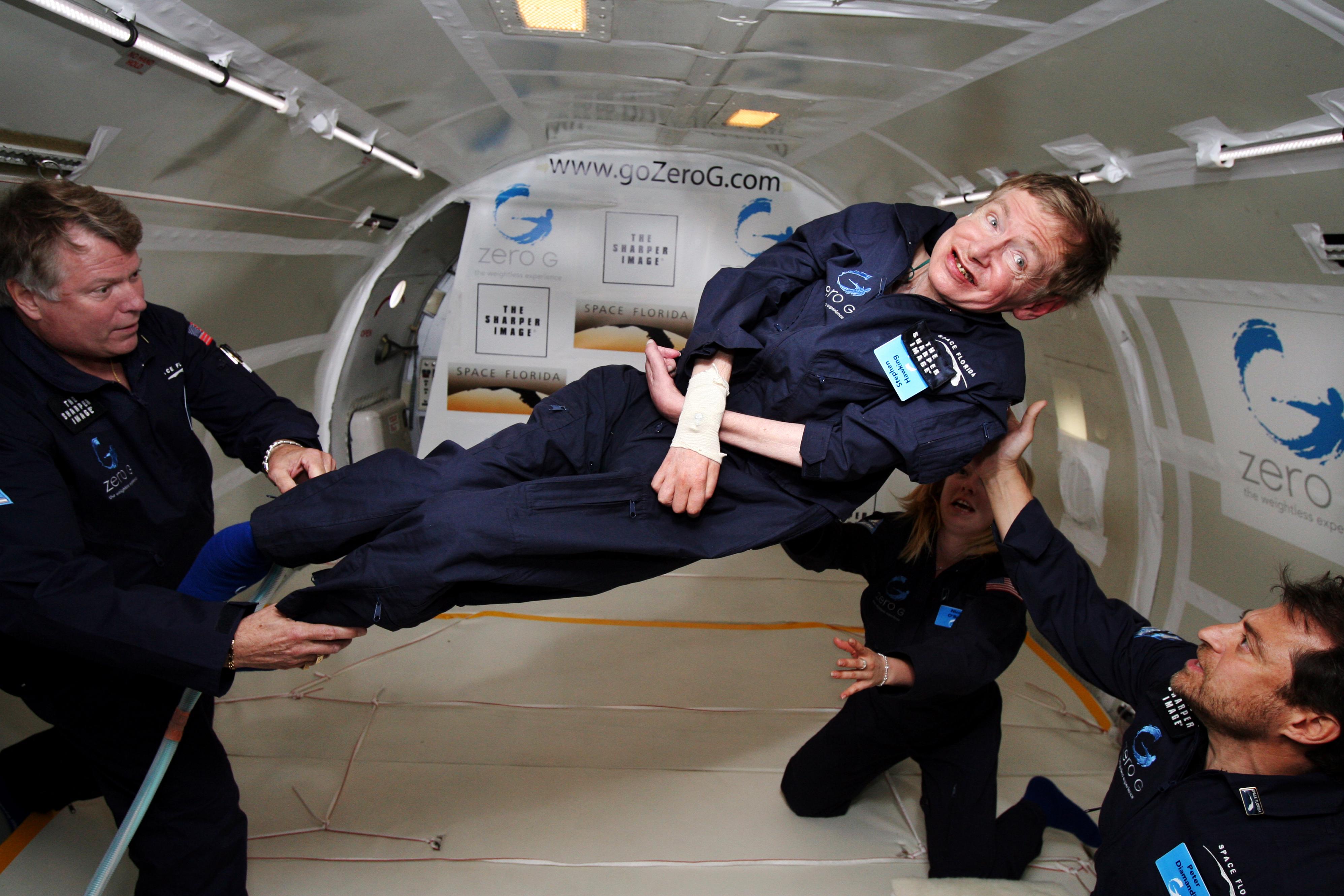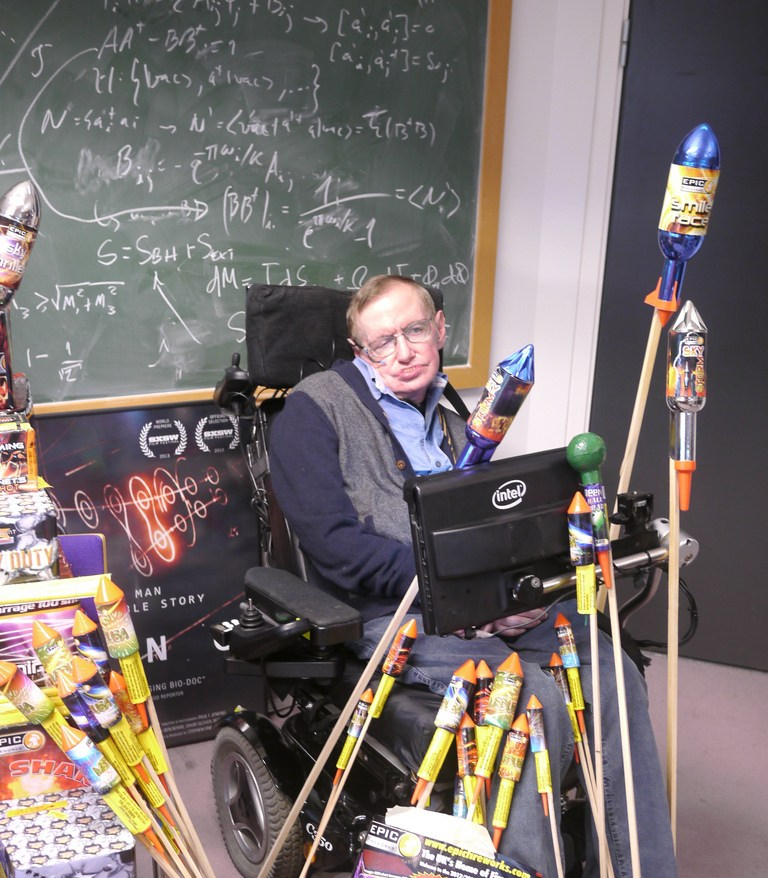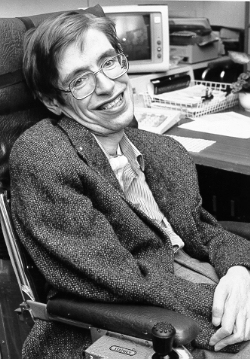At the age of 76, Stephen Hawking passed away on March 14, 2018. For an average person, living this long is already an impressive feat. However, Hawking was no regular person.
Hawking was born on Jan. 8, 1942. In his childhood, he attended a few different schools, including St. Albans school and Radlett School. Although his grades weren’t exceptional, he was regarded by many to be very smart, even earning the nickname Einstein from some of his classmates.
Hawking began attending Oxford University in 1959. In the beginning, he has noted that the work was ridiculously easy for him, and he spent the first half of his time there mostly to himself.
However, the second half became somewhat challenging for Hawking. It has been noted that his poor demeanor at the beginning made finals challenging, and Hawking decided to only answer the theoretical physics questions.
After his three years at Oxford, Hawking began attending Cambridge. It was around this time that he was diagnosed with Amyotrophic Lateral Sclerosis, simply called Lou Gehrig’s disease.
The disease slowly shuts down any motor function by ruining the nerves in the body and weakening muscles. The age this disease becomes onset is largely variable, anywhere from a few years to 50 years.
After receiving this news, Hawking fell into a bout of depression. While colleagues urged him to study on, he failed to see the point, as doctors had given him about two and a half years to live.
 One night while he was sleeping, Hawking had a dream that he was to be executed. When he awoke, he realized there was still more he wanted to do in life. Some people have attributed this instance to Hawking continuing his work and achieving such heights.
One night while he was sleeping, Hawking had a dream that he was to be executed. When he awoke, he realized there was still more he wanted to do in life. Some people have attributed this instance to Hawking continuing his work and achieving such heights.
In 1965 Hawking earned his Ph.D. from Cambridge with his thesis, “Properties of Expanding Universes.” This thesis examines the expansion of the universe, and what implications that might have. It is 100 pages, and freely available online for now.
Hawking undertook one of his most notable works, the Theory of Singularity, in collaboration with Roger Penrose. The two set out to ponder more on the universe both in terms of its beginning and current state.
A singularity is a place at which some quantity, of either space or time, becomes infinite. Theory says that such an event does exist in our universe; a black hole.
This work led to the much-discussed big bang theory, an explanation for how the universe began. This theory states that billions of years ago everything existed at a single, very dense, point which exploded, initiating time and space.
Hawking continued to observe black holes, and his study led to two more important theoretical discoveries. The first of these was that black holes can give off heat, previously it had been believed nothing could escape a black hole. Secondly, that millions of mini black holes created the big bang, as opposed to one giant black hole.
Aside from study, Hawking was also a well-known author. One of his best-known books, “A Brief History of Time,” went on to sell over 10 million copies. This book covered such diverse topics as space and time, and the existence of God. The intent of the book was so that everyone may have access to the material Hawking studied. The book spent four years on the London Times best selling list and has been translated into more than 40 languages.
 This book was not as simple as Hawking had hoped, so he followed up the book with, “The Universe in a Nutshell,” then several years later, “A Briefer History of Time.” Each book contained some new information regarding his overall study, and each one was progressively simplified so that all may comprehend it.
This book was not as simple as Hawking had hoped, so he followed up the book with, “The Universe in a Nutshell,” then several years later, “A Briefer History of Time.” Each book contained some new information regarding his overall study, and each one was progressively simplified so that all may comprehend it.
These are but a few of many great works in the life of Hawking. This man pushed science and math forwards to heights previously thought unreachable. However, not all remember Hawking only for his works in the field of physics.
Hawking was known by many as a bit of a jokester. Starting back when he was at university, Hawking joined a rowing team where his instructor defined him as somewhat of a daredevil. He was also very popular in school, trying to be one of the boys at times.
Crews that had the opportunity to meet Hawking and receive interviews often noted that he was attempting some sort of joke, trying to out maneuver the crew and lose them in the crowd of students.
Even though he was a brilliant scientist, he still had time to be a human. Hawking even appeared in many shows, sharing his humor with the public.
Despite any of his hardships in life, he managed to make light of the situation. Whether playing chess with an android or continuing the discussion of the shape of the universe, Hawking never ceased to share his talents.
 In addition to all of this, he was a very loved family man. His previous wife, Jane Hawking, was there for much of his disease, as well as their three children. They, like many couples, disagreed on many things, such as the movie made about his life. Stephen Hawking thought the film needed more science, while Jane believed it needed more emotion.
In addition to all of this, he was a very loved family man. His previous wife, Jane Hawking, was there for much of his disease, as well as their three children. They, like many couples, disagreed on many things, such as the movie made about his life. Stephen Hawking thought the film needed more science, while Jane believed it needed more emotion.
Hawking had a second wife, Elaine Mason, who he married about a year after his divorce with Jane Hawking. She spent 11 years with him helping him get through the day and was a companion. They split in 2006.
His three children have come out since his passing to speak on him. They have told interviewers that he was a great man and a brilliant scientist, and will be missed.
“It has been a glorious time to be alive and doing research in theoretical physics. Our picture of the universe has changed a great deal in the last 50 years and I am happy if I have made a small contribution. Remember to look up at the stars and not down at your feet. Be curious. And however difficult life may seem, there is always something you can do and succeed at. It matters that you just don’t give up.”
-Stephen Hawking
Jacob Conger
Reporter



